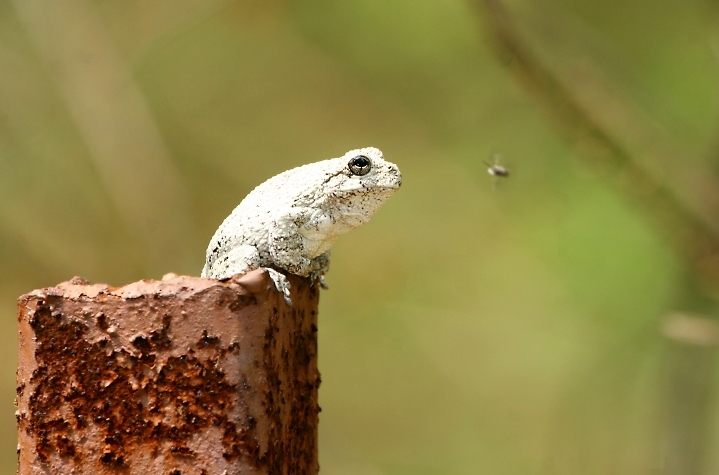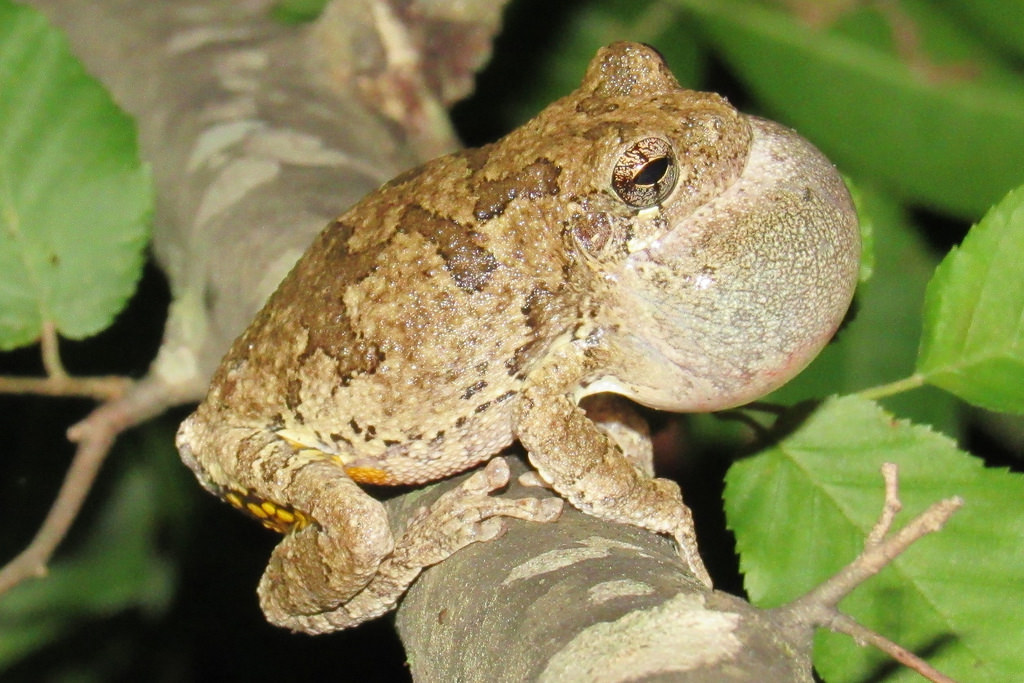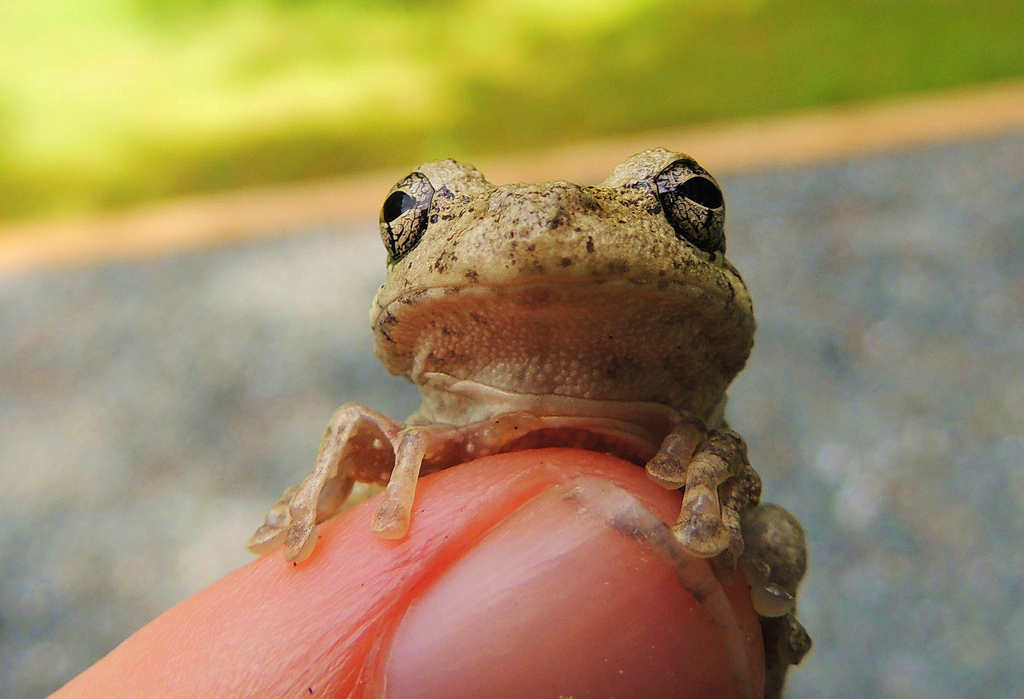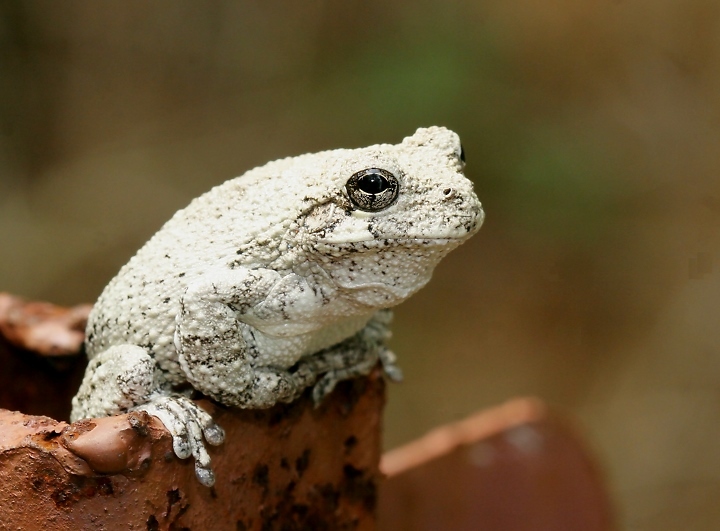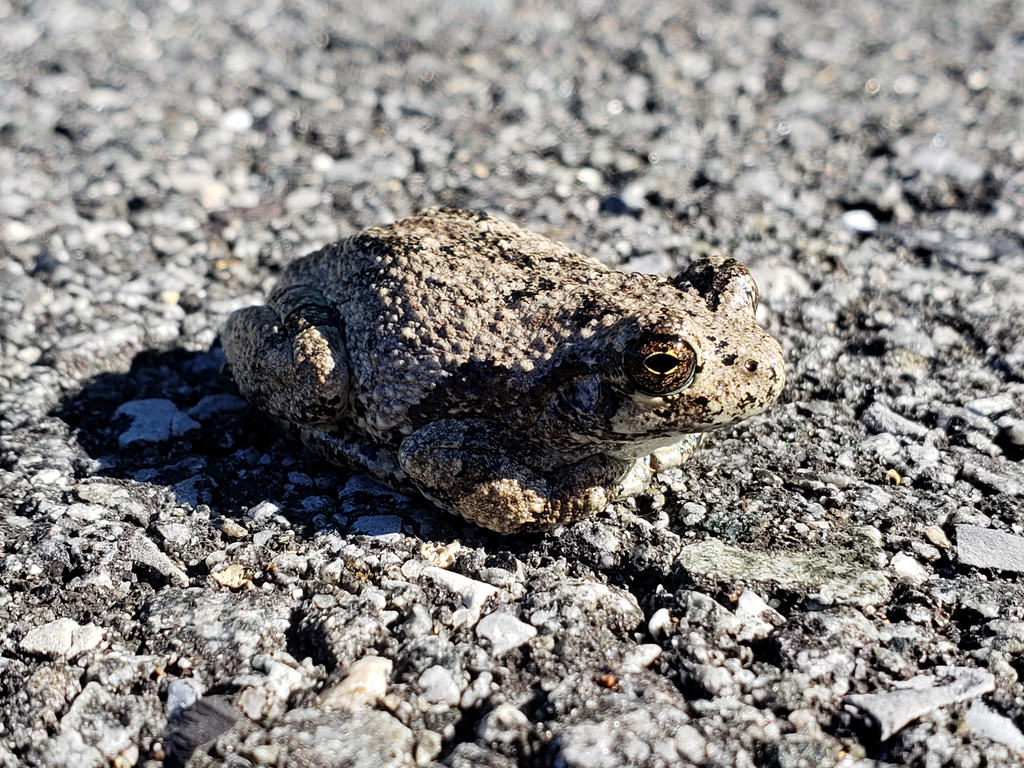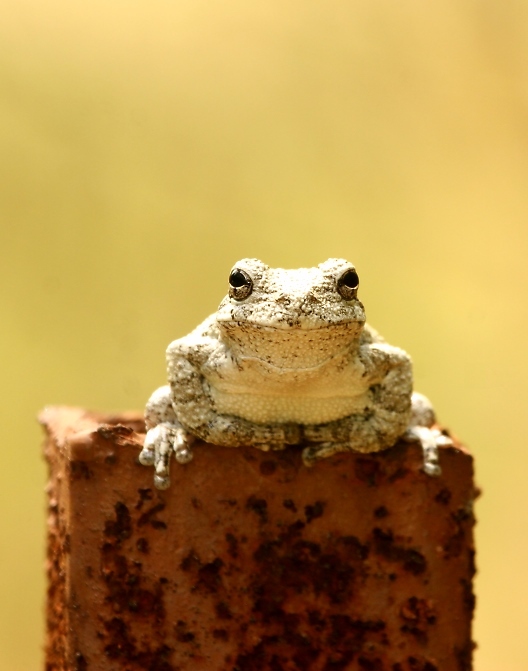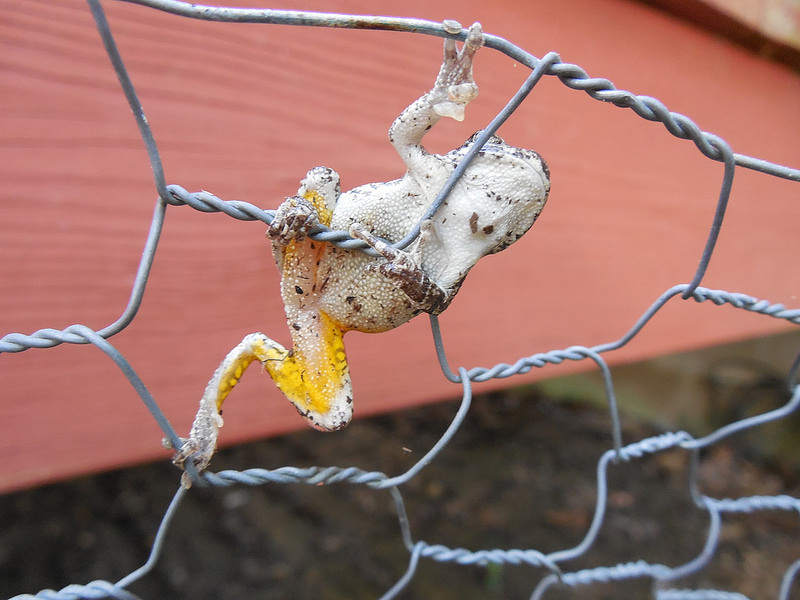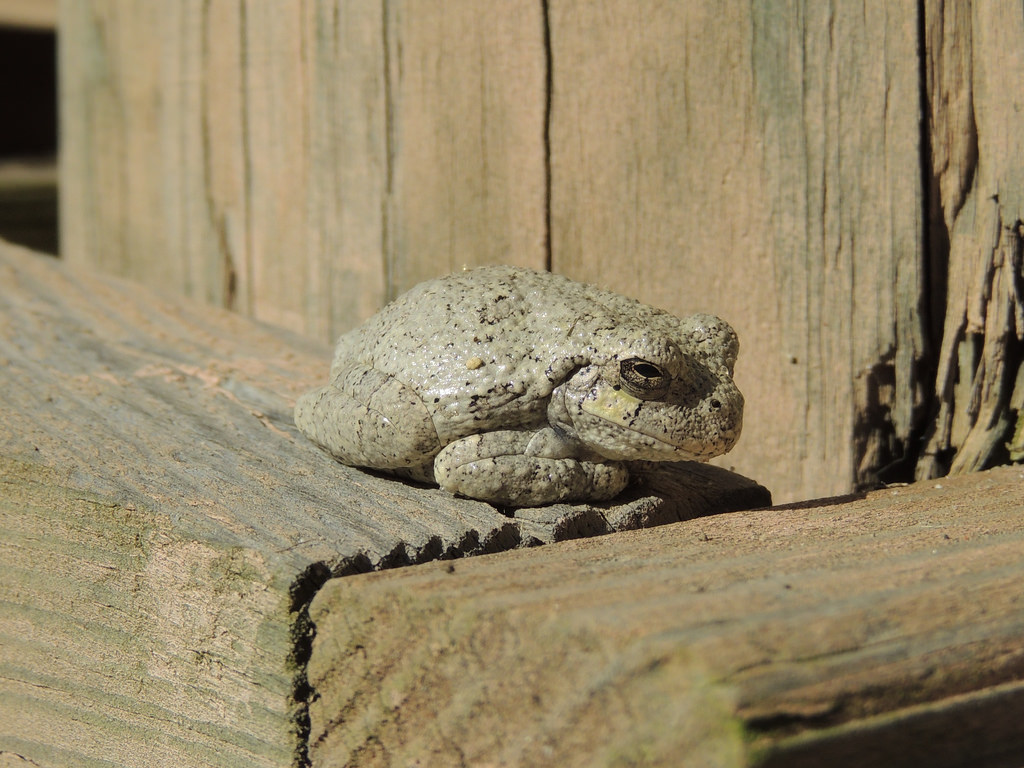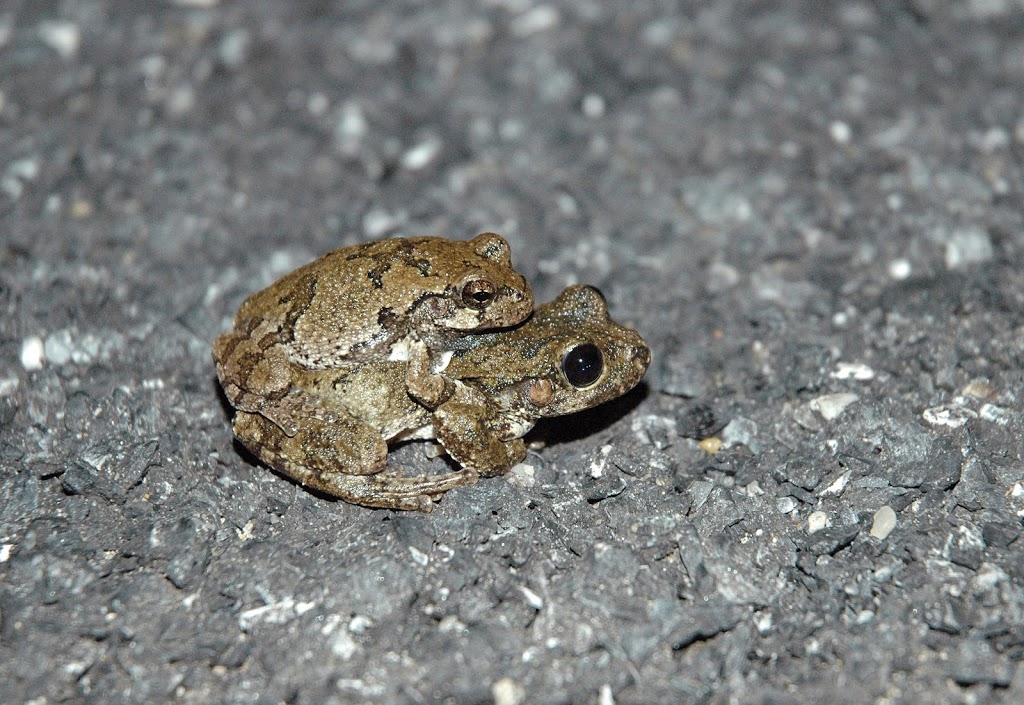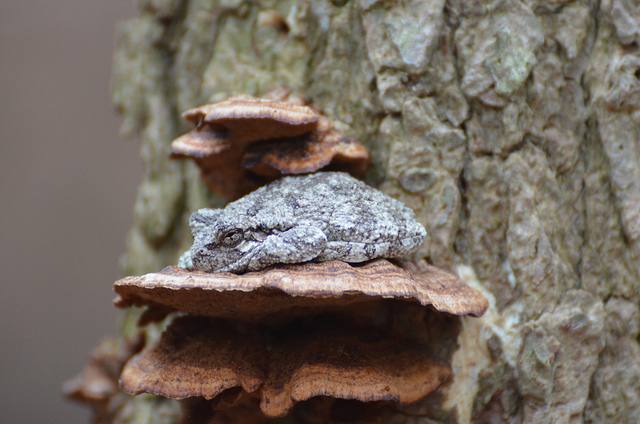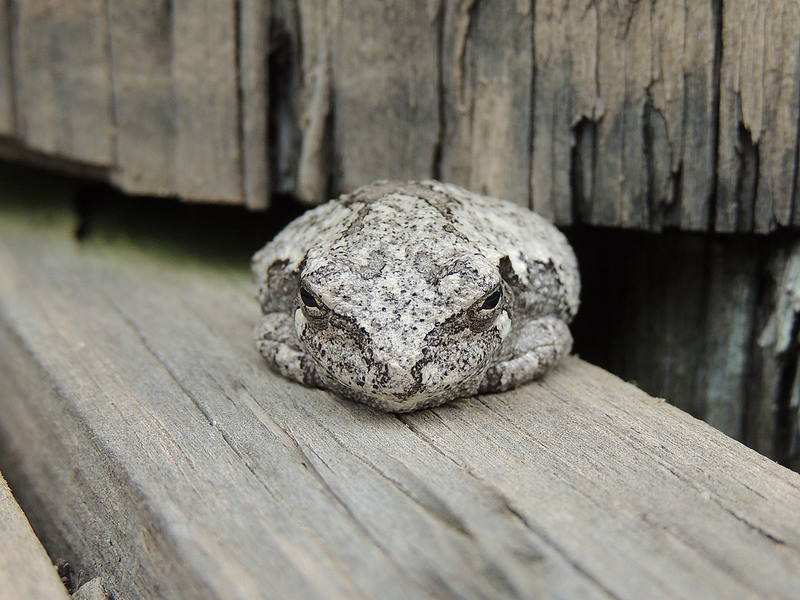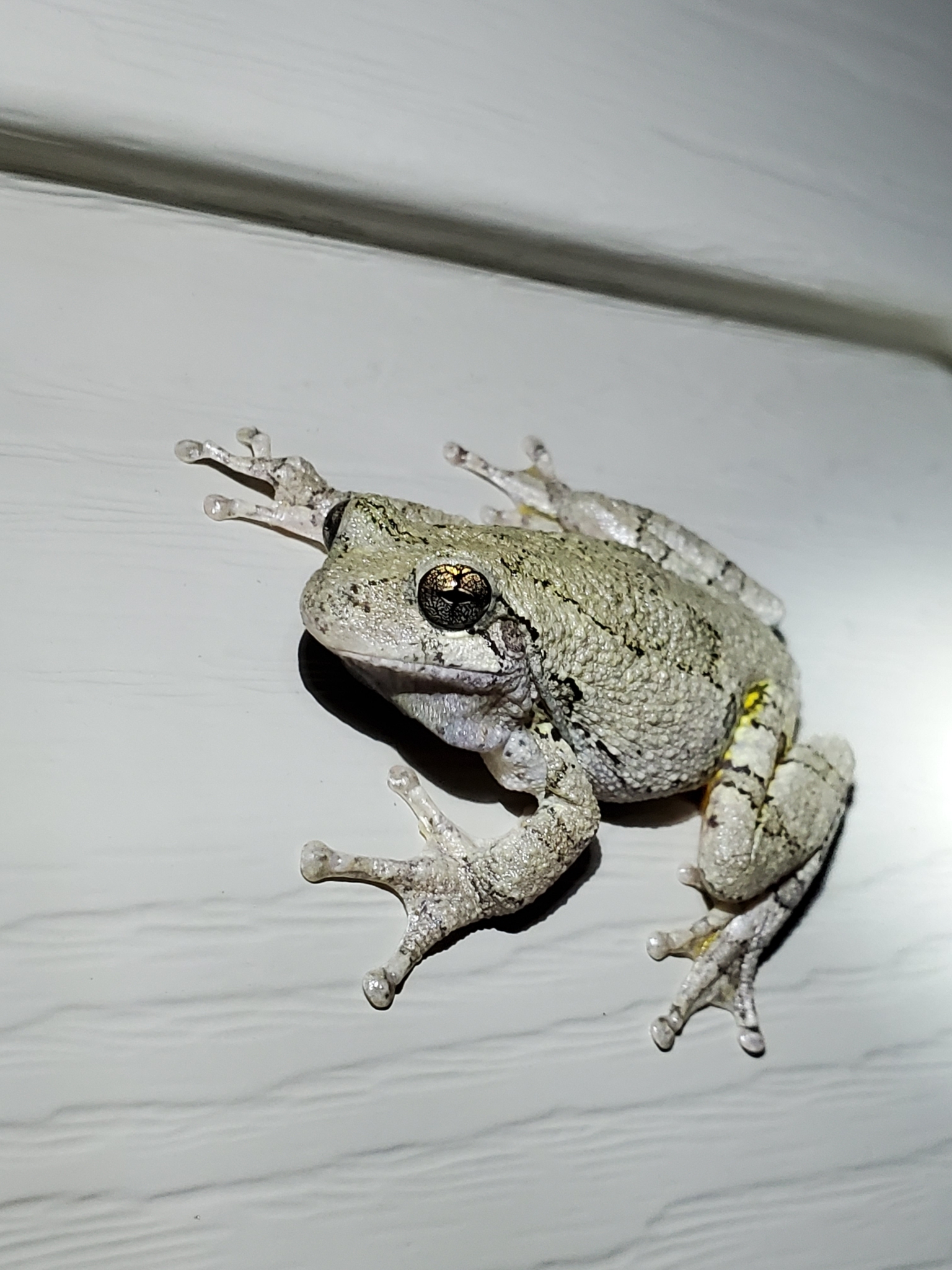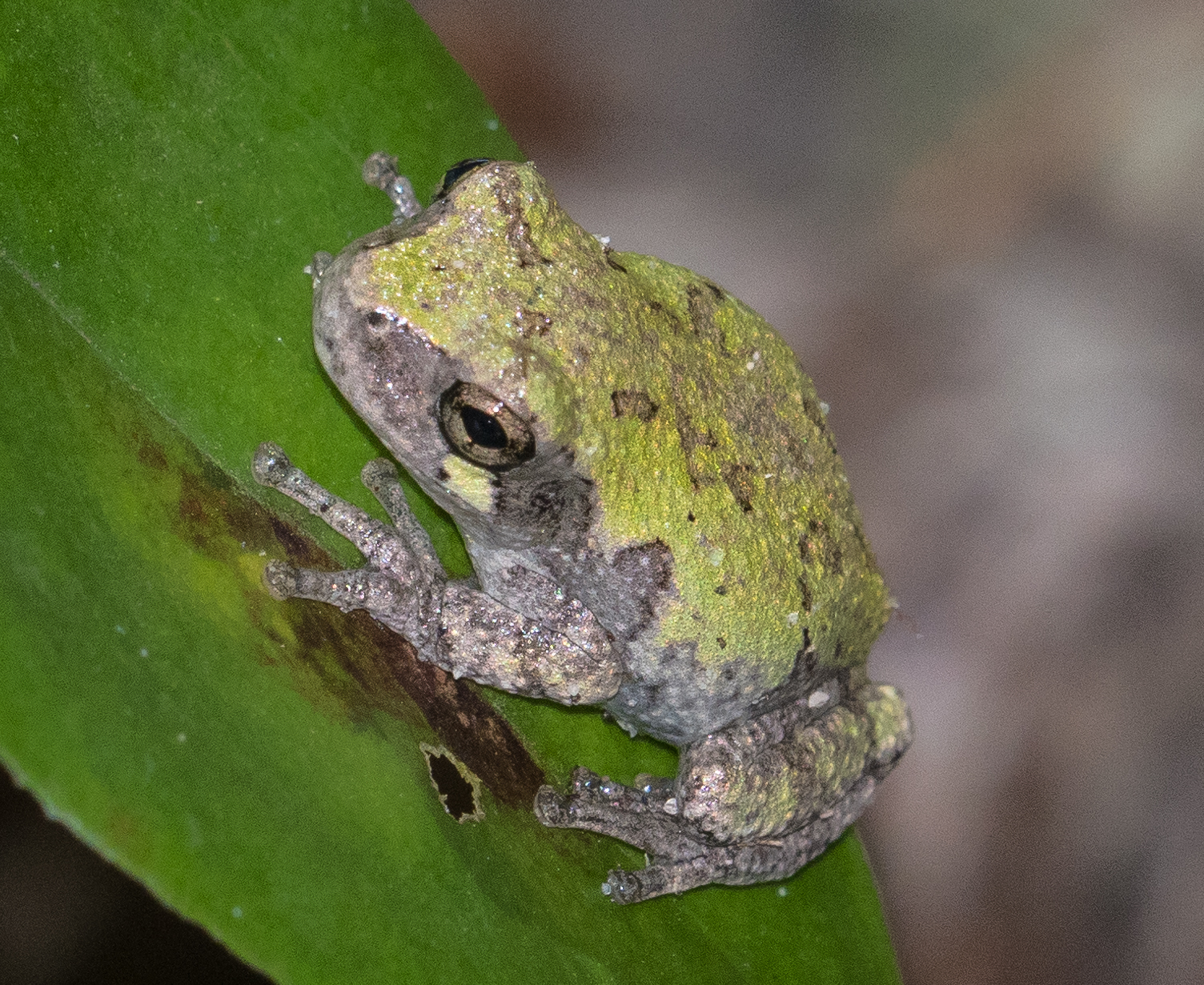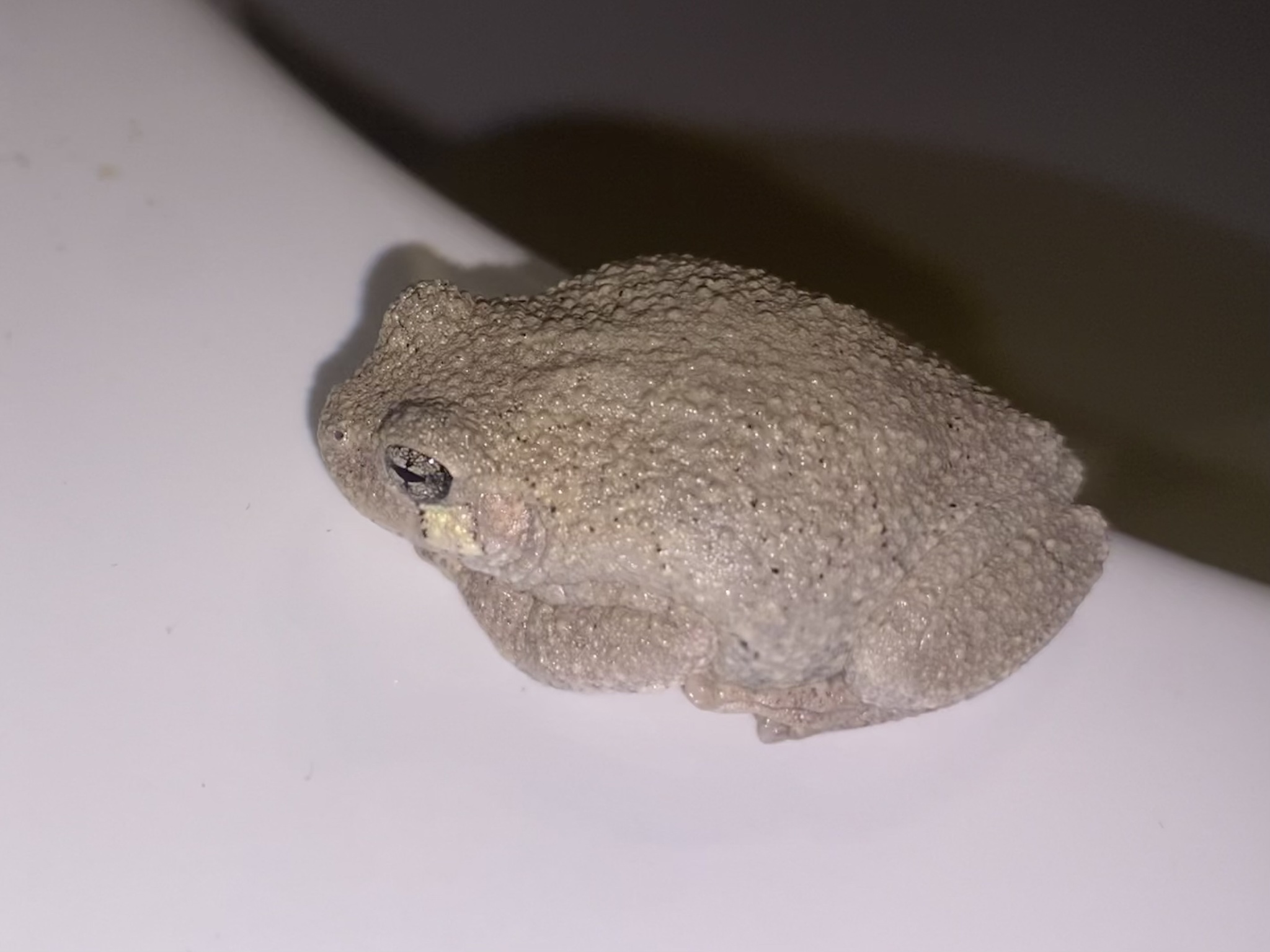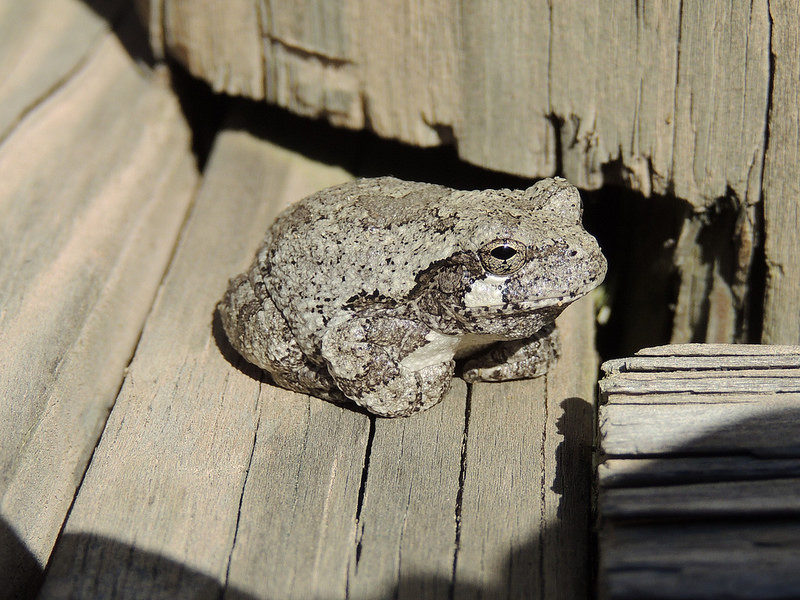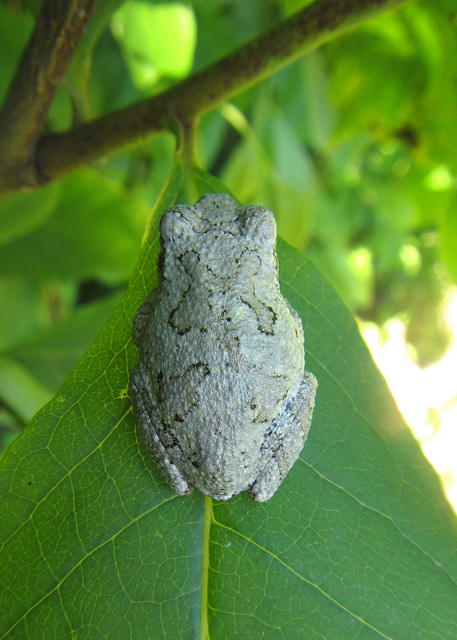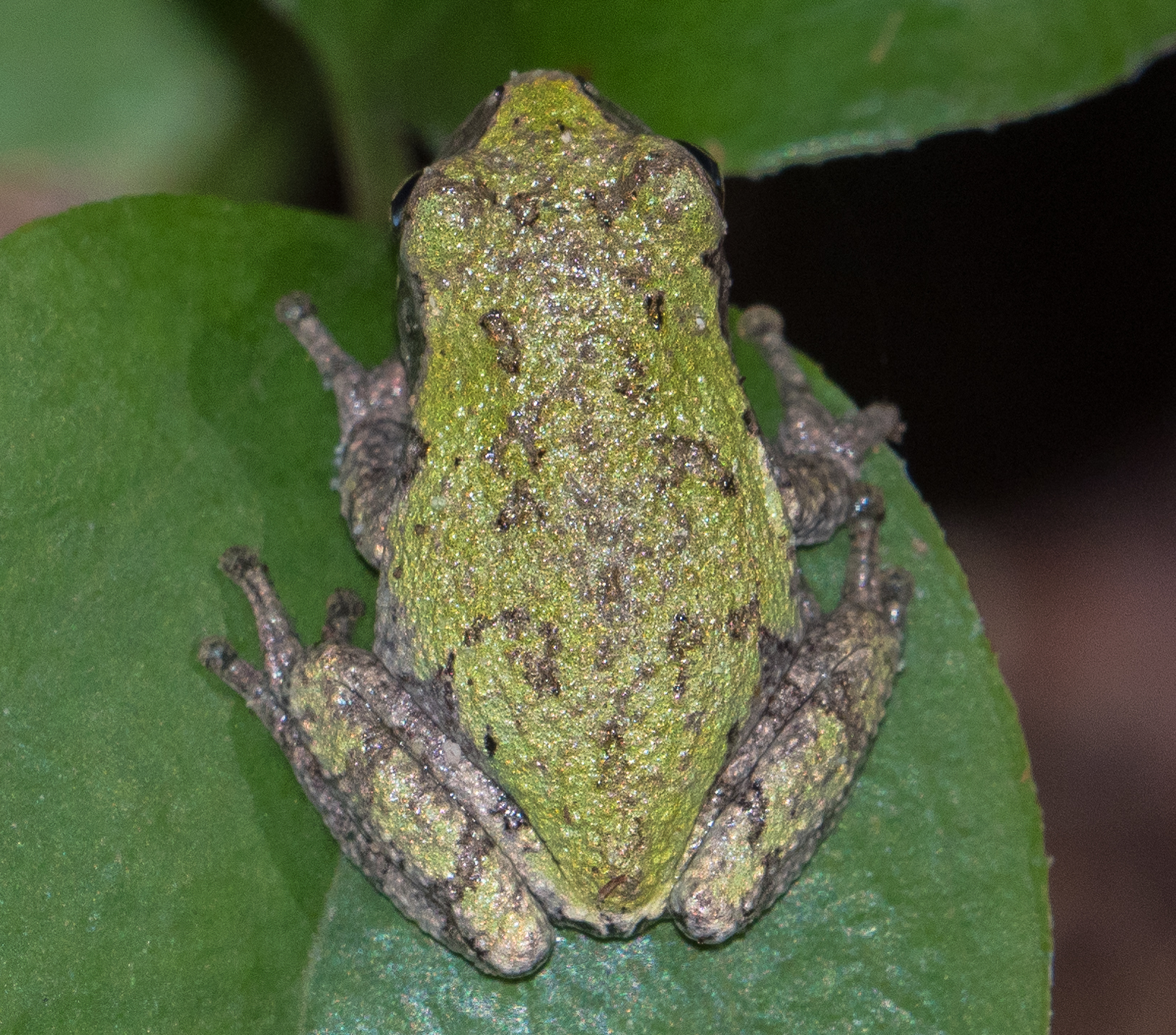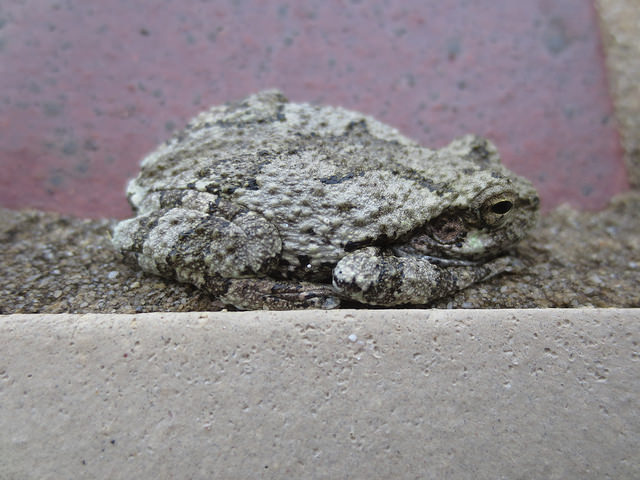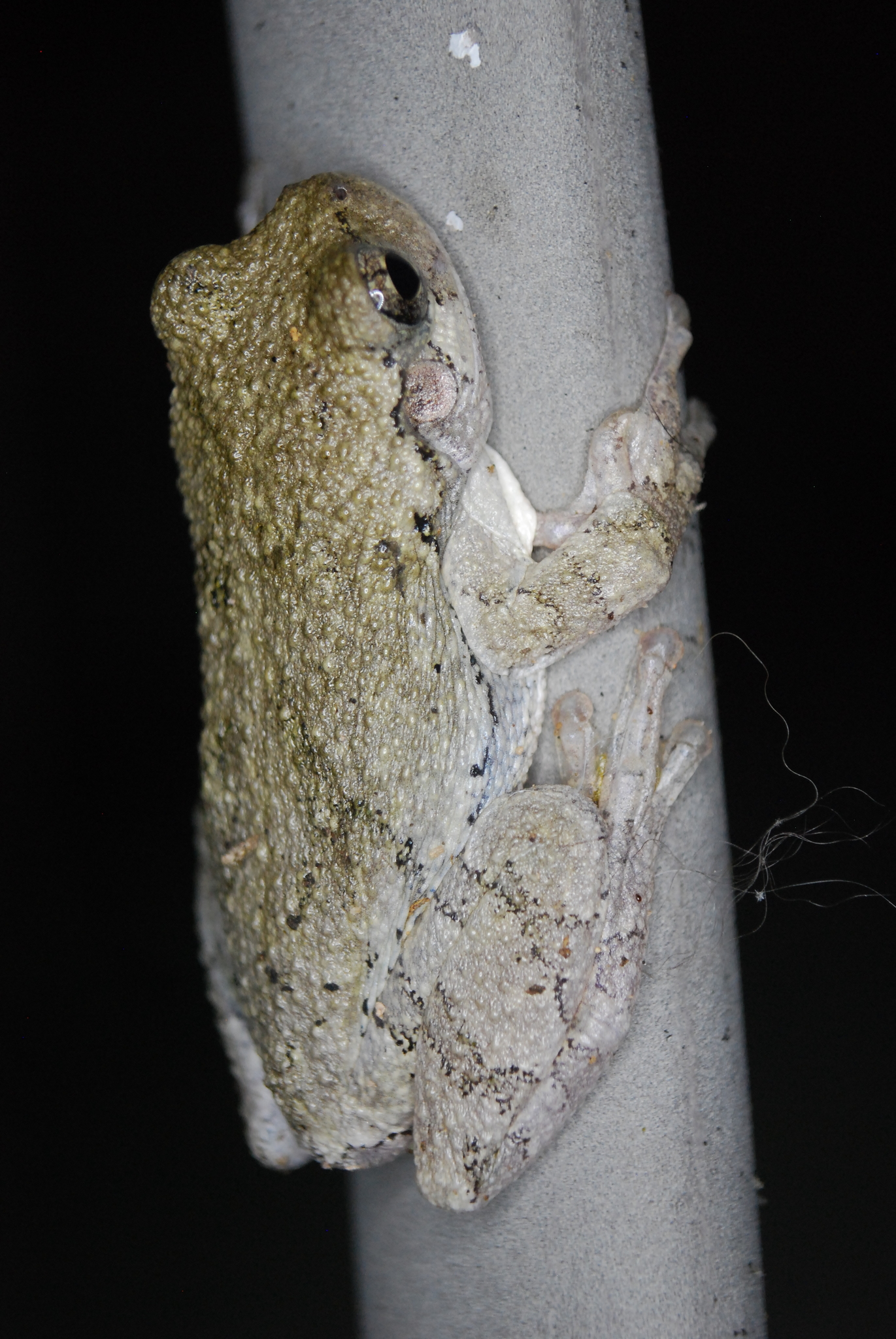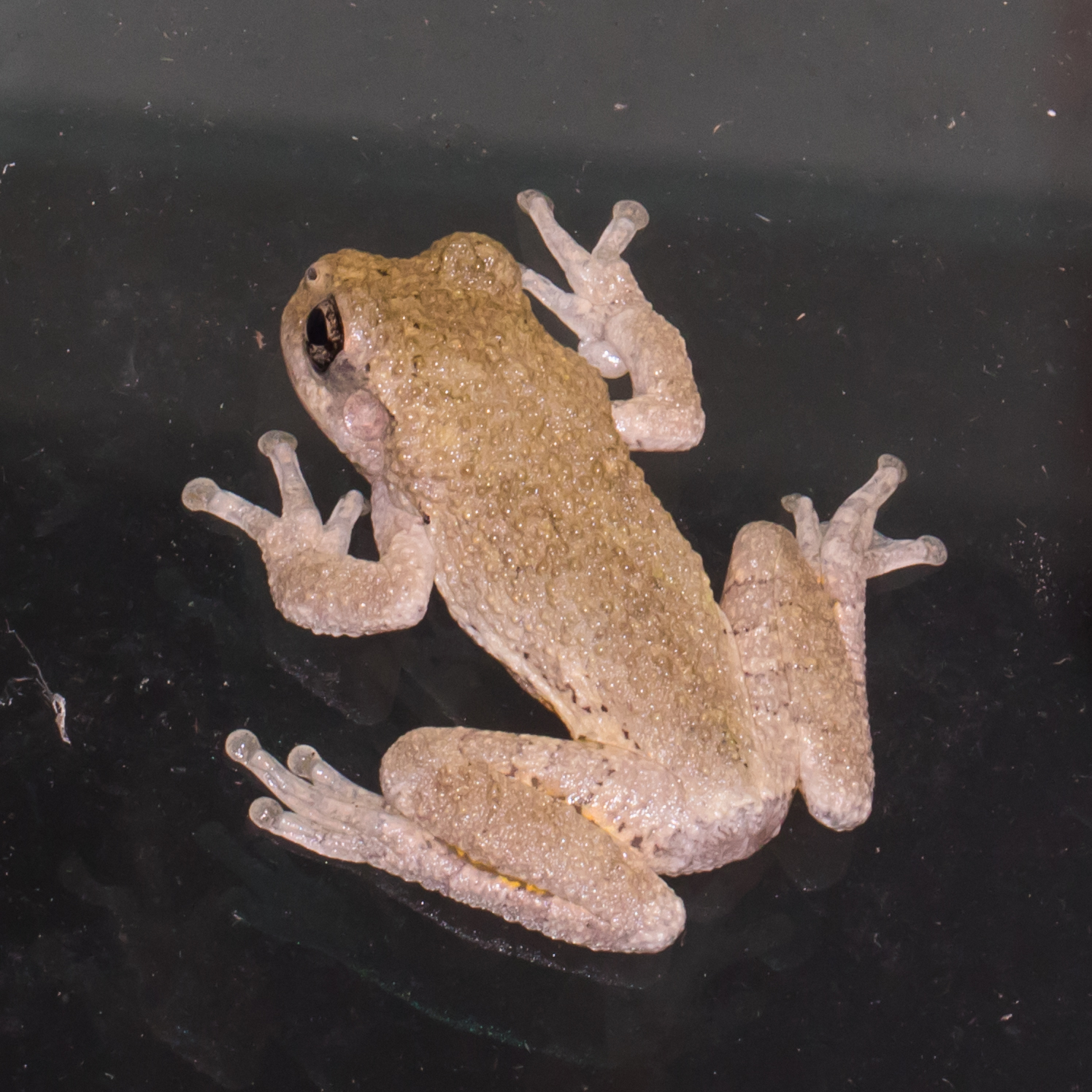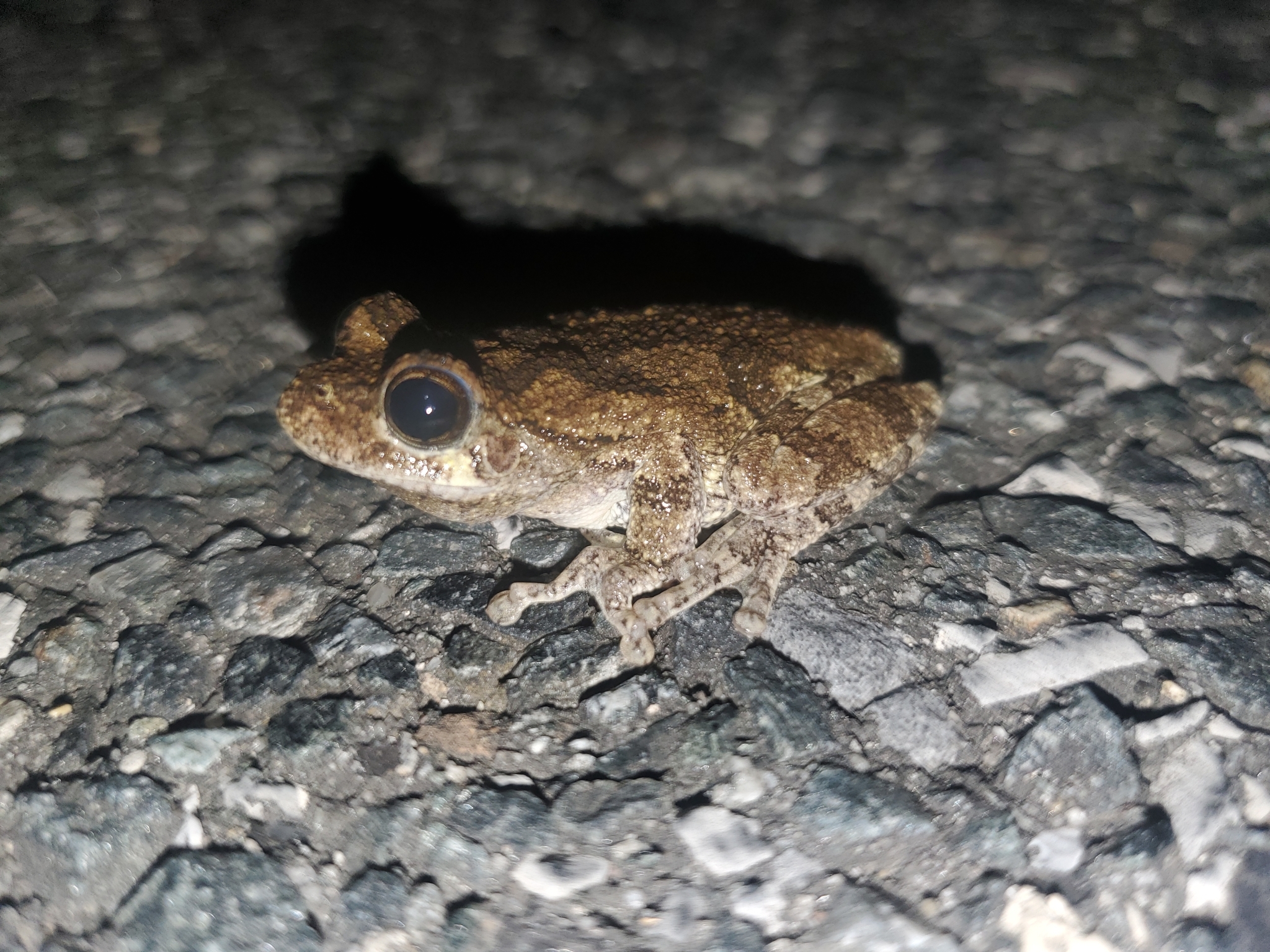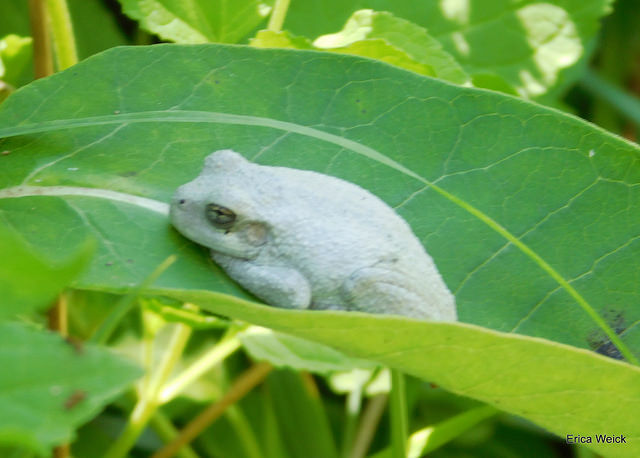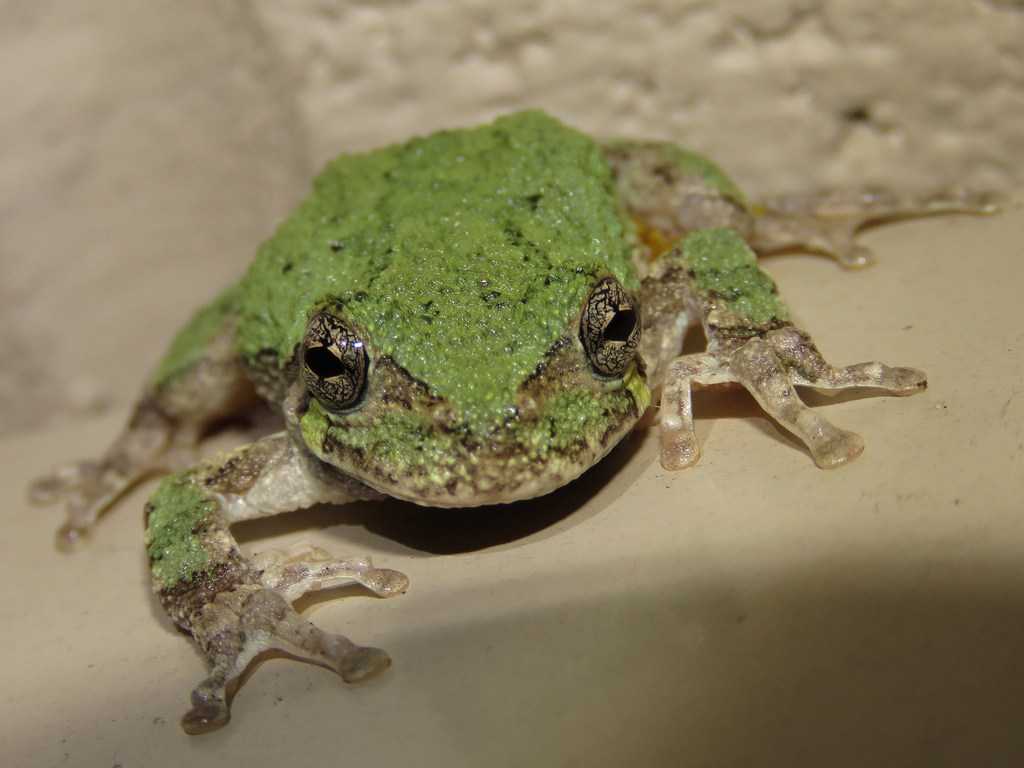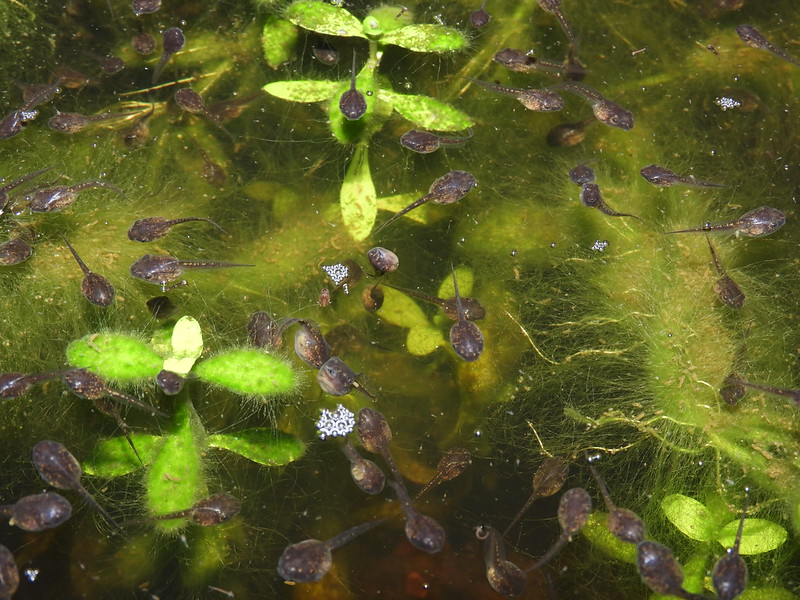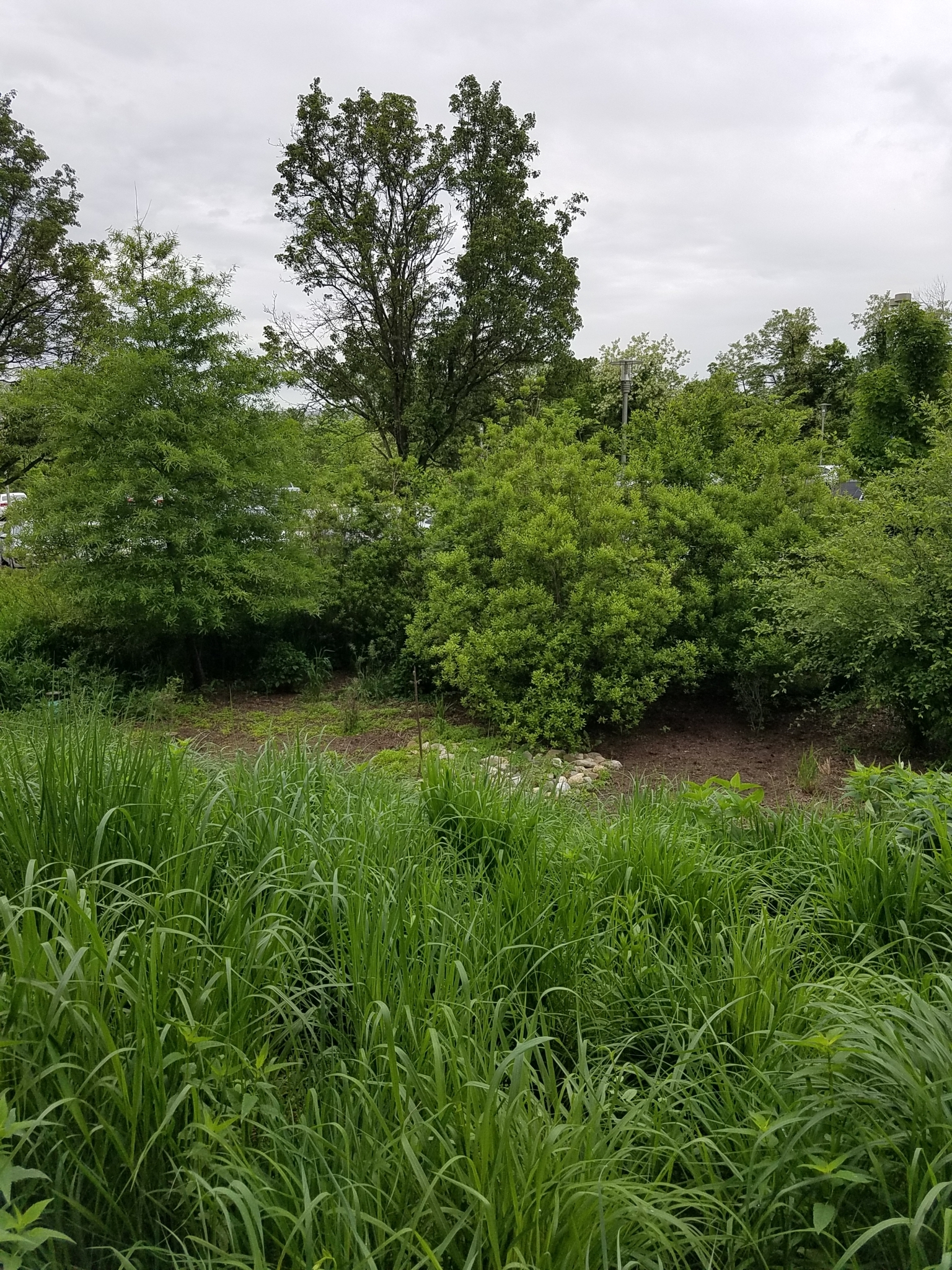
























Cope's Gray Treefrog (Hyla chrysoscelis) is one of two species of 'gray treefrogs' that are identical in external appearance, the other being Gray Treefrog (Hyla versicolor). Cope's Gray Treefrog is much more common than Gray Treefrog on the coastal plain, while Gray predominates to the west. Despite their extreme similarity, there is no interbreeding between the two species. H. chrysoscelis is diploid, and has a total of 24 chromosomes. H. versicolor is tetraploid, with 48 total chromosomes. Aside from the genetic differences, the vocalizations differ as well, and are the only way to differentiate the two species in the field. H. versicolor gives a slower, lower-pitched musical trill, while the call of H. chrysoscelis is faster, and harsher (Conant & Collins, 1998; Virginia Herpetological Society site). Both species call somewhat slower in colder conditions. H. chrysoscelis essentially replaces H. versicolor on the coastal plain. That said, recent MARA data proves that line is not as clear cut, and there appears to be some overlap.
Only safely differentiated from Gray Treefrog (H. versicolor) in the field by voice, as both species of gray treefrogs are visually identical. They are grayish or greenish, mottled treefrogs, with variegated, lichen-like patterning, and large toe pads. There is a yellow wash on the inner surface of the hind leg. Typically, there is a pale spot below the eye.
There are 476 records in the project database.
Cope's Gray Treefrog in Carroll Co., Maryland (8/4/2020). (c) Chrissy Gallo, some rights reserved (CC BY-NC). - Chrissy Gallo via iNaturalist.
Cope's Gray Treefrog in Montgomery Co., Maryland (5/11/2022). (c) Dave Roberts, some rights reserved (CC BY-NC). - Dave Roberts.
Cope's Gray Treefrog in Harford Co., Maryland (6/23/2010). (c) Bill Hubick, all rights reserved. - Bill Hubick.
Cope's Gray Treefrog in Baltimore Co., Maryland (Date obscured). (c) annmd, some rights reserved (CC BY-NC). - annmd via iNaturalist.
Cope's Gray Treefrog in St. Mary's Co., Maryland (6/12/2022). (c) Scott Clark, some rights reserved (CC BY). - sfc155 via iNaturalist.
Cope's Gray Treefrog in Anne Arundel Co., Maryland (5/10/2019). (c) atatone, some rights reserved (CC BY-NC). - atatone via iNaturalist.
Cope's Gray Treefrog in Baltimore City, Maryland (7/9/2021). (c) ekreiss, some rights reserved (CC BY-NC). - ekreiss via iNaturalist.
Cope's Gray Treefrog in Howard Co., Maryland (5/16/2017). (c) treichard, all rights reserved. - Timothy Reichard.
Cope's Gray Treefrog in Prince George's Co., Maryland (Date obscured). (c) jugbayjs, some rights reserved (CC BY-NC). - jugbayjs via iNaturalist.
Cope's Gray Treefrog in Baltimore Co., Maryland (5/6/2019). No rights reserved. - lotteryd via iNaturalist.
Cope's Gray Treefrog in Howard Co., Maryland (5/27/2021). (c) Veniecealys, some rights reserved (CC BY-NC). - Veniecealys via iNaturalist.
| GA | AL | WA | FR | CL | MO | HO | BA | BC | HA | CE | PG | AA | CV | CH | SM | KE | QA | CN | TA | DO | WI | SO | WO |
